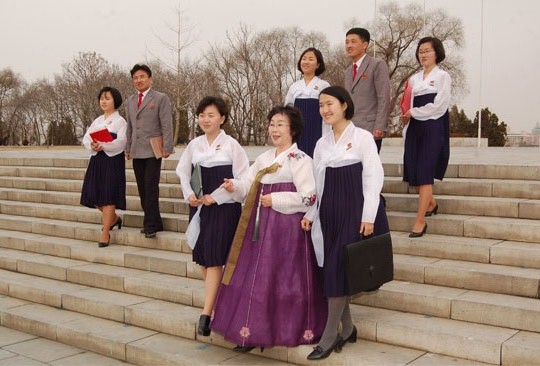A story that speaks volumes
White jogori (Korean jacket) and black chima (Korean skirt) is neat and tidy in respect of colour combination so that it reflects the pure and clear heart of Korean women well.
In the middle of September Juche 66 (1977), Chairman
The Chairman said that the Korean costumes, especially the women’s chimajogori with a long history of thousands of years, was cultural and elegant that we could be proud of it anywhere in the world. Mentioning that in the past white jogori and black chima were the favorite dress of young ladies for its simple and decent appearance, he instructed that they should be added in the uniforms for girl students.
There was a story why the Chairman instructed to dress girl students with white jogori and black chima.
It was just after the liberation.
One day, the anti-Japanese war heroine Kim Jong Suk paid great attention to the dress of a female farmer who was to attend an important state function.
Before the liberation, the female farmer leased the land from a landlord and went through all sorts of hardships. After the liberation, she received the land and donated the first year harvested rice to the country out of patriotism.
Comrade Kim Jong Suk asked female officials what kind of dress the female farmer fits.
They told their own ideas; black suit, purple suit, one-piece dress and so on.
Listening to their answers beside them, young Chairman
Everyone was surprised at him. Nobody thought of that costume.
Loving and prizing our own things unique to the nation from the childhood, the Chairman took measures to supply a suit of white jogori and black chima to each girl student in order to fill the streets with Korean women’s pure and clean mind.
Today, white jogori and black chima is popular not only as the uniform of girl students but as one of the favourite dresses among women telling the expressive story and benevolent love of the days.
